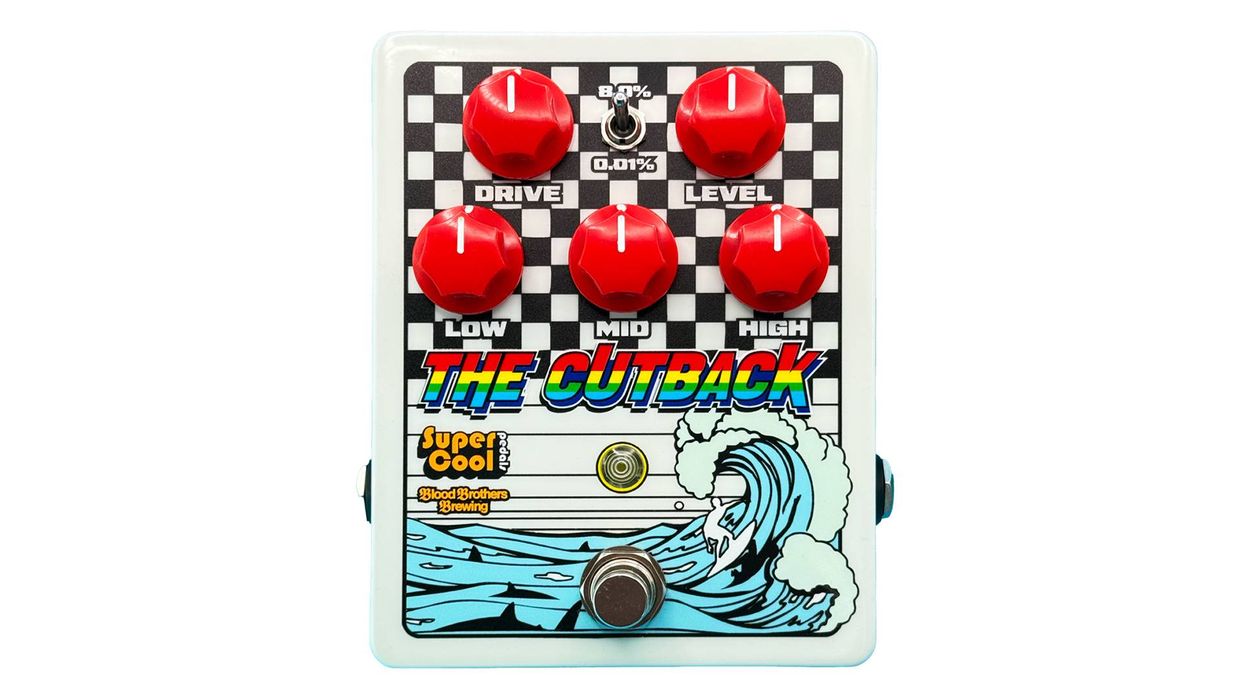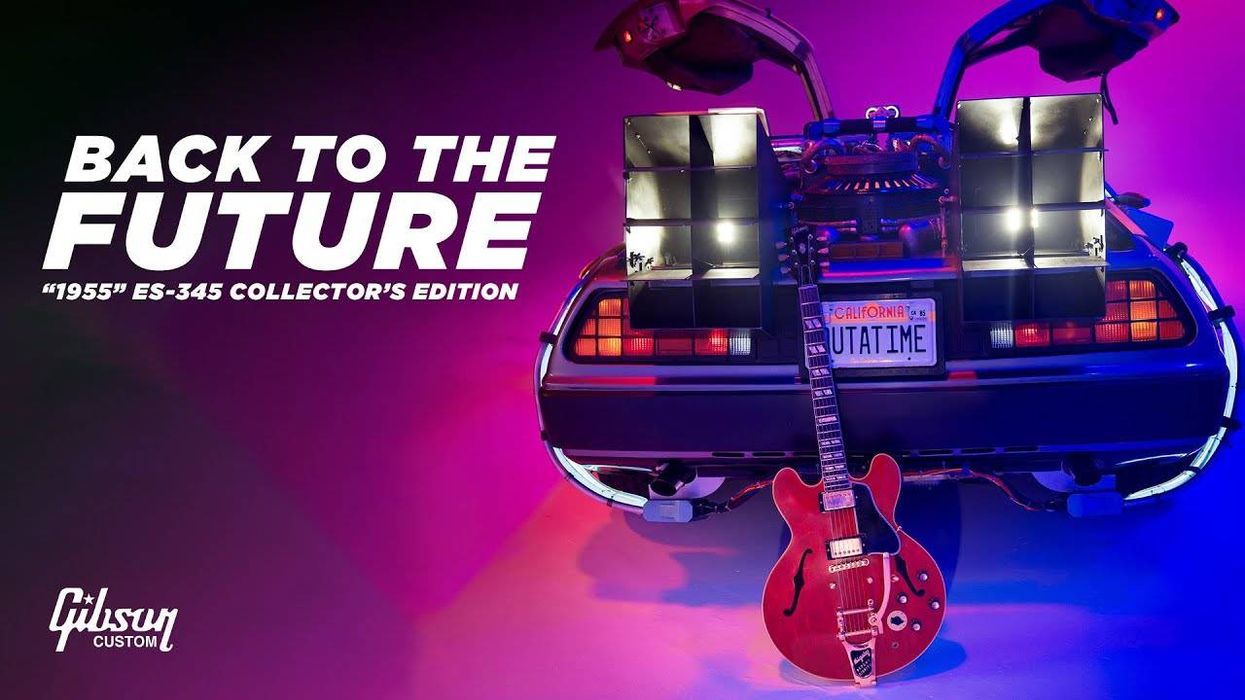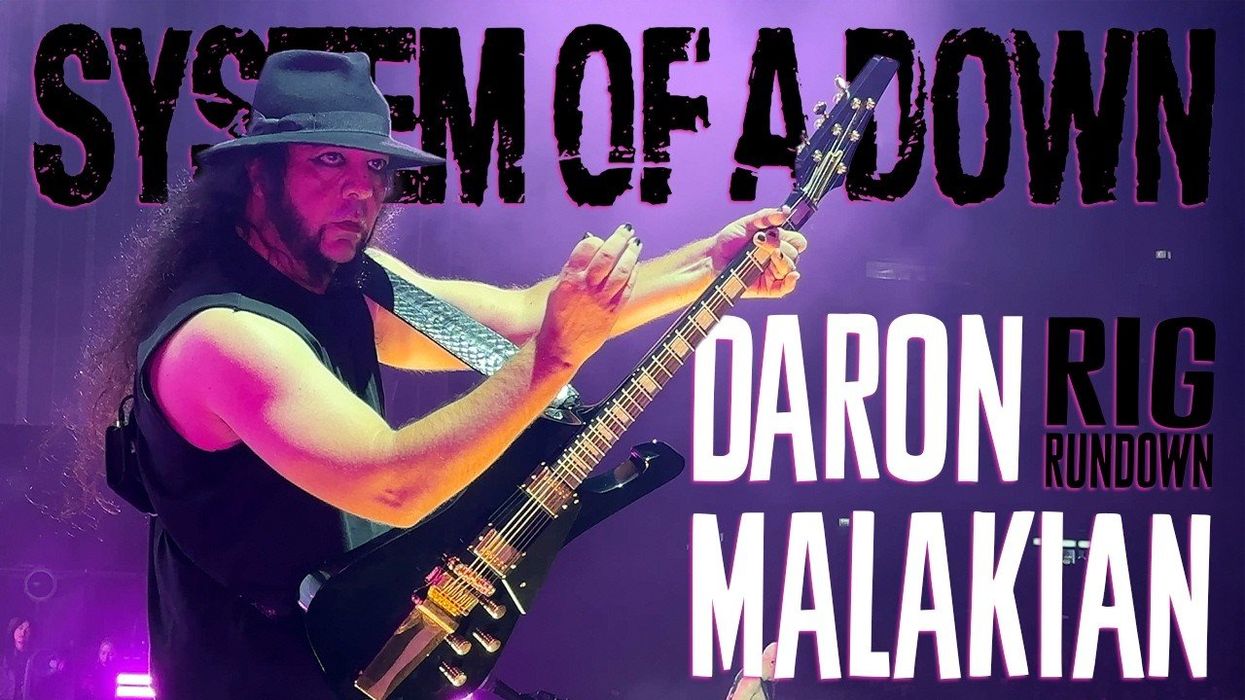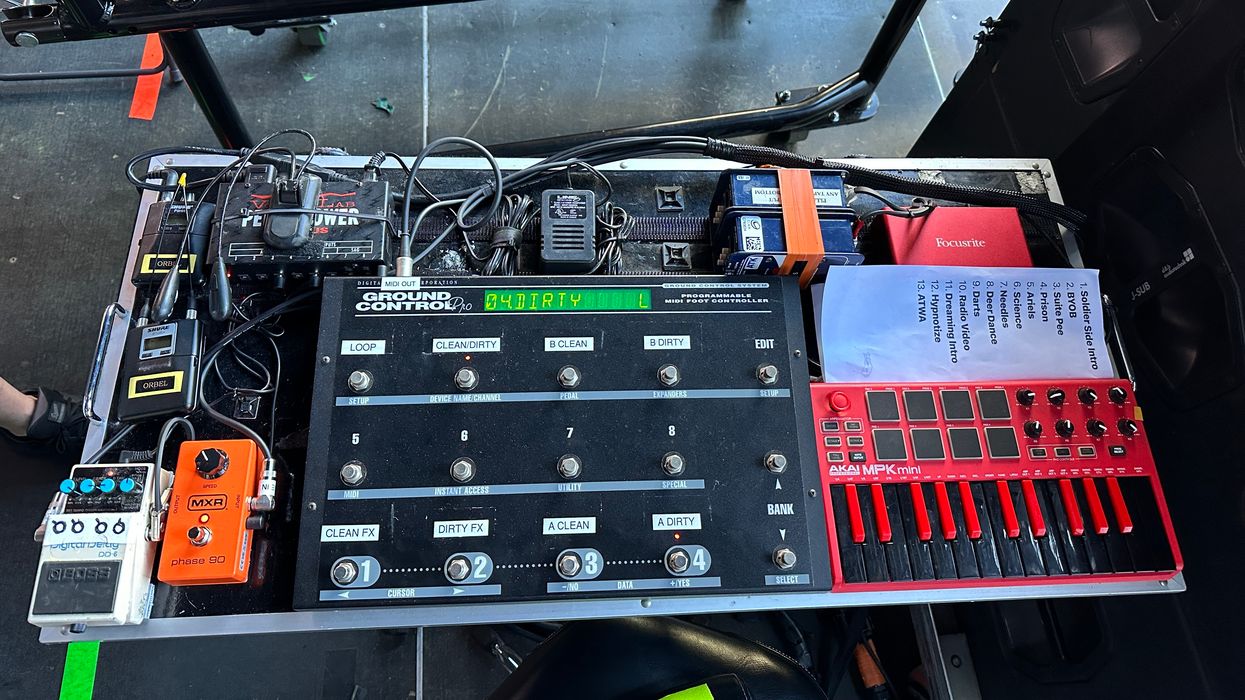Oscillation, octave, out-there sounds, and Bozo-the-Clown dive bombs take shape with a trusty offset, some pissed-off P-90s, and a pedalboard stocked with interactive tone tanglers.
Crobot’s hard-riffin’, smooth-groovin’ rock anthems often ride on the back of guitarist Chris Bishop’s handiwork. The guitarist carefully corrupts his tone with creative pedal tweaking, but he’s never lost sight of his role within the quartet.
“The groove is the most important thing in the song and, being the only guitar player, my main focus is to make sure that’s there,” explains Bishop to PG in 2016.
And when you’re opening for the party-rocking Steel Panther, no goal can be greater than making the crowd move ’n’ groove. Before Crobot’s set at Nashville’s Marathon Music Works, Bishop welcomed PG’s Chris Kies onstage to detail his trio of guitars—a beloved offset and a pair of P-90-loaded Teles—his parti-colored pedalboard, and the Victory VS100 Super Sheriff and Kemper Profiler that work together to create his massive sound.
Brought to you by D’Addario XS Strings.
The Bodacious Berly
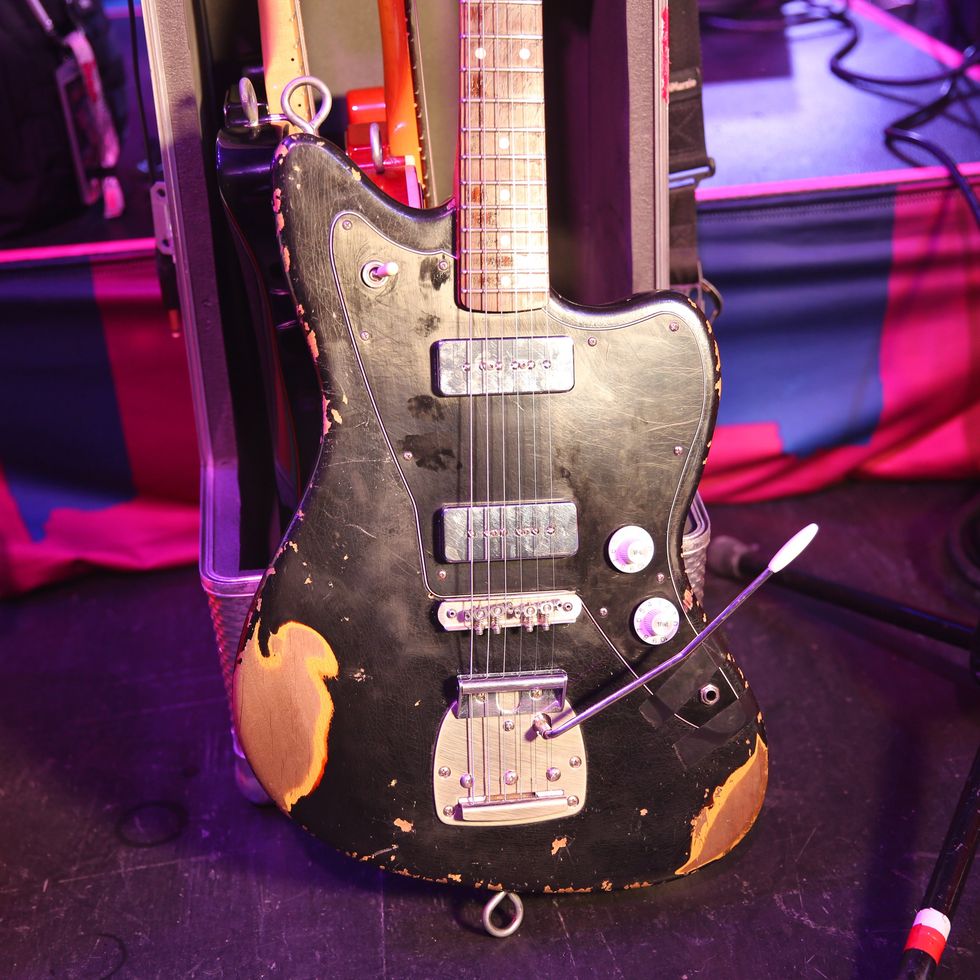
Crobot cronies will note that Bishop has favored Telecaster and T-style guitars for most of the band’s existence. Unfortunately, their trailer got stolen during a recent tour, so the guitarist had to rebuild his rig. His current go-to is this J-Master that was built (and beaten) by Berly Guitars.
“This guitar has the Lollar P-90s in it, which are really awesome and probably my favorite pickups that I got. They can be noisy, and I play loud, but it’s not like riding a bull [laughs].”
The other thing Bishop really enjoys about his new squeeze is its big, chunky neck that has a V profile and is heavily sanded down for primo movement. The guitar was modified to have an AllParts Buzz Stop to help with string rattling. All of his guitars take a custom set of DR Strings (.010–.048).
Red Right Hand
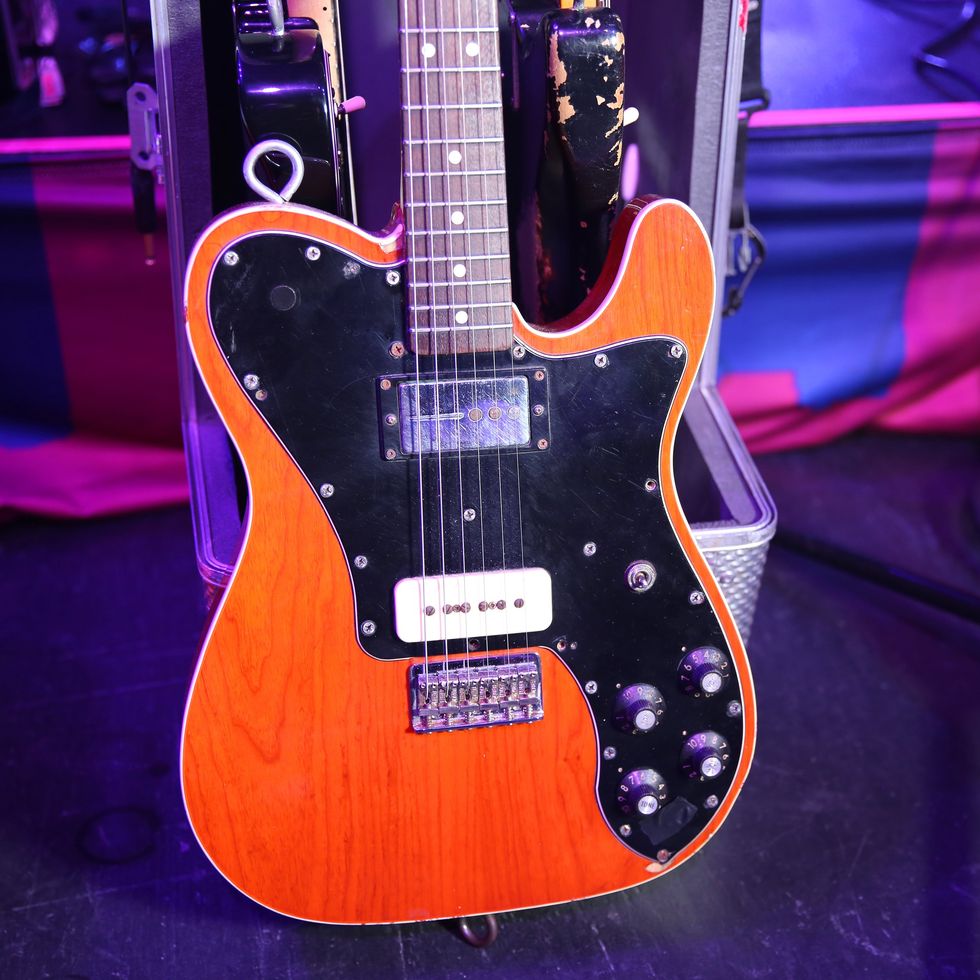
Bishop’s Fender Telecaster Custom was overhauled with a Seymour Duncan P-90 in the bridge and a Railhammer Tel90 Neck pickup. This T used to enjoy more time in the spotlight, but for this opening-slot run, it only saw the stage during Crobot’s newest single, “Golden,” which utilizes double-drop-D tuning (D–A–D–G–B–D).
Long Distance Call
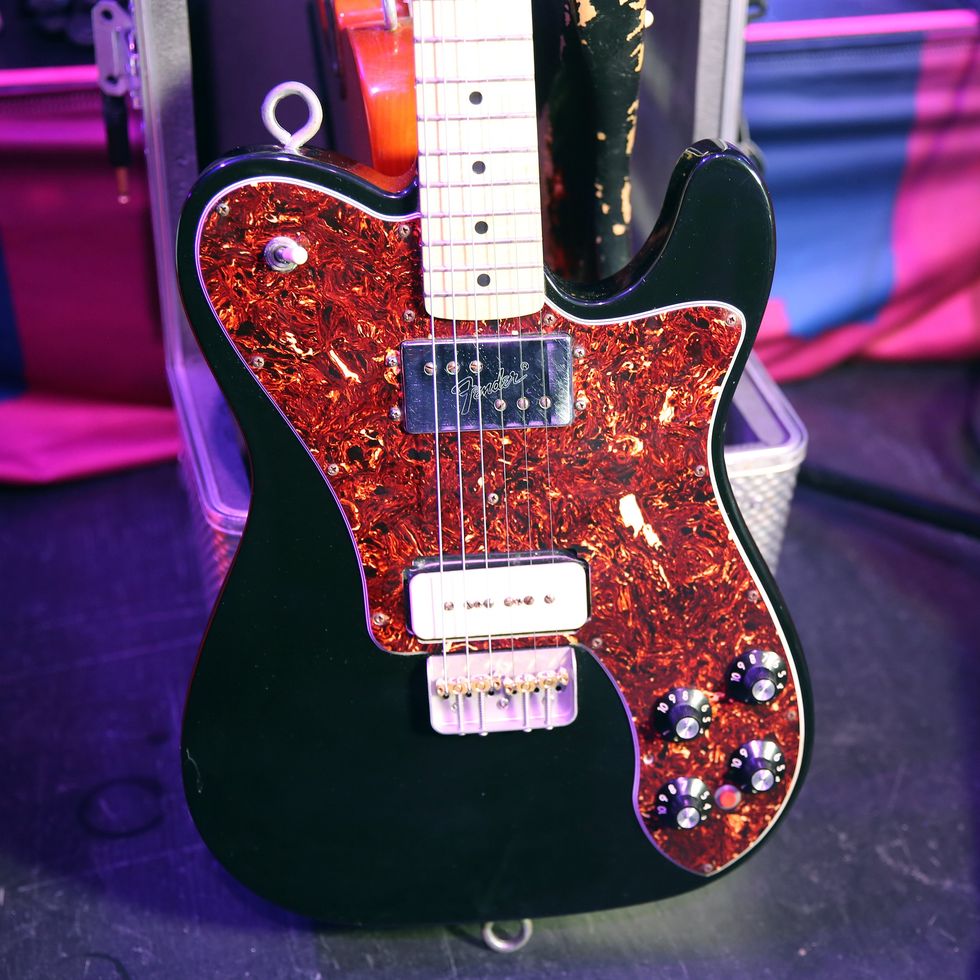
This Fender Telecaster Deluxe used to reside in Europe, where it was part of Bishop’s international rig. But when the band’s trailer got jacked, the guitarist called it back to the States. It features two main mods—a Mastery M6 Hardtail Bridge and a Seymour Duncan P-90 in the bridge. The red button is a kill switch.
A Little Bit of Everything
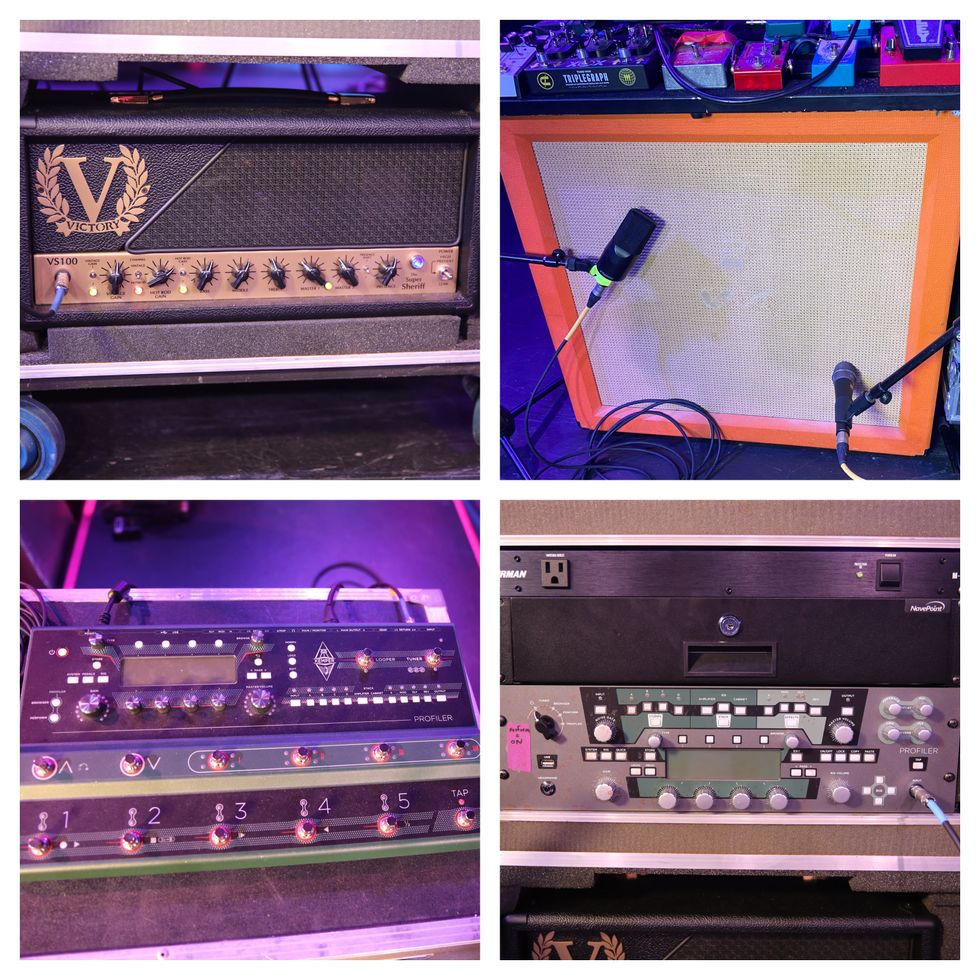
Orange Terror amps were Bishop’s backline for years. Looking to change things up, he tried out a Victory VS100 Super Sheriff and fell in love with the first gain mode of the Hot Rod channel, where he now lives all night. The VS100 runs into an Orange Crush Pro 4x12 cabinet. To create a stereo effect, Bishop sends a signal from a Kemper Profiler Stage to FOH. The engineer blends his direct sound with the two mics on the cab, making it sound like there’s two Bishops blasting riffs. The remaining Kemper Profiler is for bassist Tim Peugh.
Chris Bishop’s Pedalboard
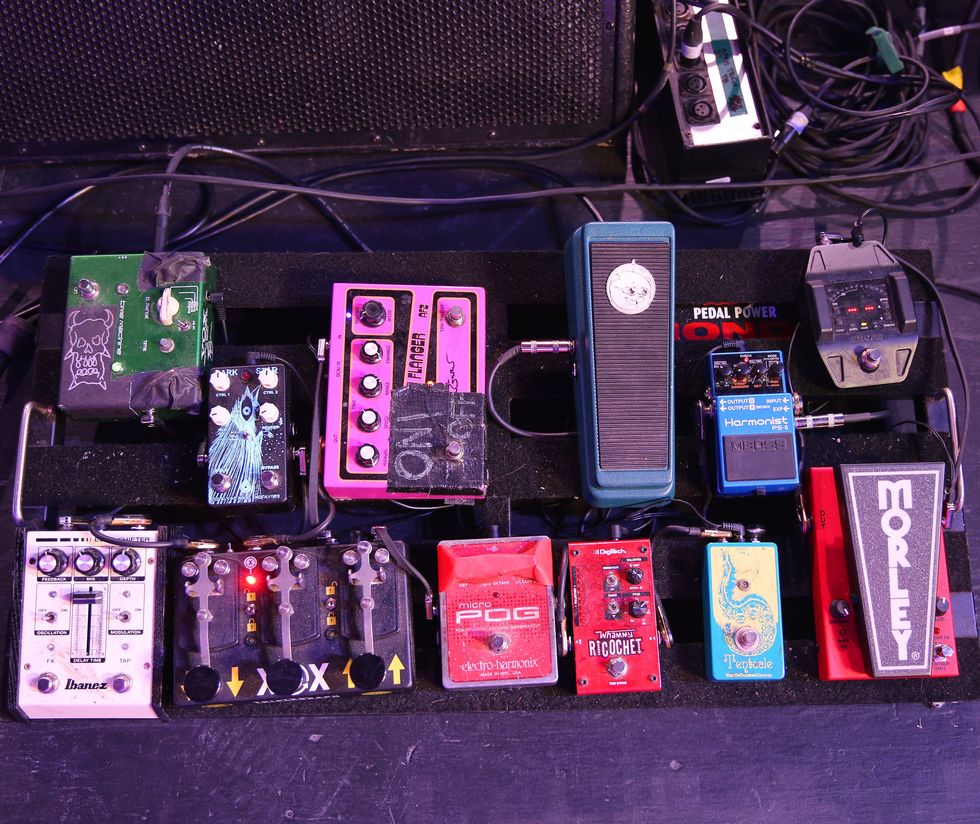
Spaceship landings, airplane flybys, otherworldly madness, and what Bishop describes as “Bozo-the-Clown-sounding, flanger-like dive-bombs” are generated by this team of stomps: (top left) a Vox Joe Satriani Time Machine Delay, an Old Blood Noise Endeavors Dark Star, Ibanez AF2 Paul Gilbert Airplane Flanger, an expression pedal to control the Boss PS-6 Harmonist. On the bottom row is an Ibanez ES2 Echo Shifter Analog Delay, a Coppersound Pedals/Third Man Triplegraph, an Electro-Harmonix Micro POG Polyphonic Octave Generator, a DigiTech Whammy Ricochet, an EarthQuaker Devices Tentacle Analog Octave Up, and a Morley 20/20 Bad Horsey Wah. A Shure GLXD16+ wireless unit keeps him untethered, and a Voodoo Lab Pedal Power Supply MONDO brings the juice.




![Devon Eisenbarger [Katy Perry] Rig Rundown](https://www.premierguitar.com/media-library/youtube.jpg?id=61774583&width=1245&height=700&quality=70&coordinates=0%2C0%2C0%2C0)

















